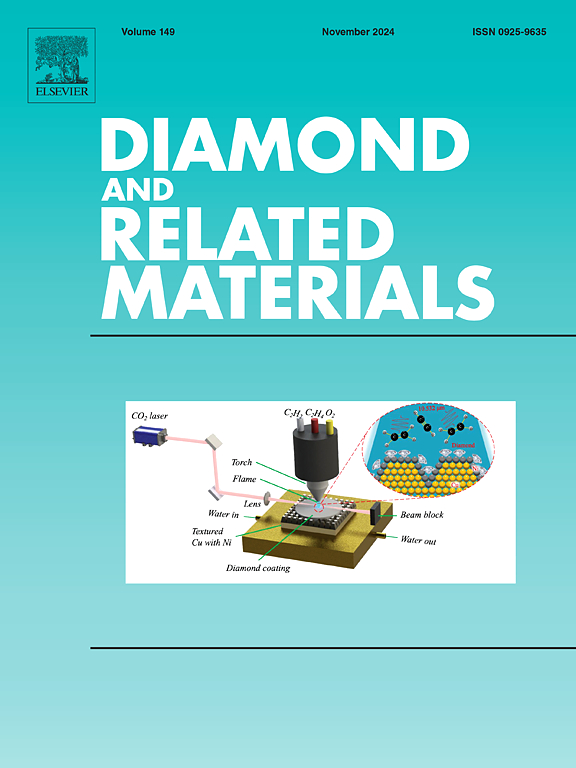Single-step pyrolysis of Stipa Tenacissima fibers to hard carbon: A potential route for sodium-ion battery anodes
IF 4.3
3区 材料科学
Q2 MATERIALS SCIENCE, COATINGS & FILMS
引用次数: 0
Abstract
Hard Carbon (HC) has emerged as a viable candidate for the negative electrode material in sodium-ion batteries (SIBs). This study focuses on the development of a novel HC-negative electrode derived from the pyrolysis of Stipa tenacissima fibers (STF). Prior to pyrolysis, STF underwent a hot water wash pre-treatment, and various pyrolysis temperatures (800 °C, 1000 °C, and 1300 °C) were investigated to elucidate their influence on HC properties and performance. Structural analysis revealed significant differences in the HC structure, highlighting a direct correlation between capacity improvement and the size of accessible micropores for sodium insertion. Composite electrodes were assembled and evaluated in non-aqueous sodium half-cells to assess HC's performance. Notably, increasing the pyrolysis temperature resulted in higher reversible capacity (RC). Specifically, HC prepared at 1300 °C exhibited an RC of 270 mAh g−1, initial coulombic efficiency (ICE) of approximately 60 %, and exceptional reversibility with 99 % capacity retention after 90 cycles at a 25 mA g−1 of current density (CD). These results surpassed those obtained with HC prepared at 800 °C and 1000 °C. Moreover, this study explores the biological, biochemical, biophysical, and structural advantages conferred by STF, making it a promising component in SIBs, with the ultimate goal of establishing long-lasting, high-performance battery systems.

将 Stipa Tenacissima 纤维一步热解为硬碳:钠离子电池阳极的潜在路线
硬碳(HC)已成为钠离子电池(SIB)负极材料的可行候选材料。本研究的重点是开发一种新型碳氢化合物负极材料,这种材料来源于热解 Stipa tenacissima 纤维(STF)。在热解之前,STF 经过热水洗涤预处理,并研究了不同的热解温度(800 ℃、1000 ℃ 和 1300 ℃),以阐明它们对碳氢化合物特性和性能的影响。结构分析揭示了碳氢化合物结构的显著差异,突出了容量提高与钠插入的可进入微孔大小之间的直接关系。在非水钠半电池中组装和评估了复合电极,以评估碳氢化合物的性能。值得注意的是,提高热解温度可获得更高的可逆容量(RC)。具体来说,在 1300 °C 下制备的 HC 的可逆容量为 270 mAh g-1,初始库仑效率(ICE)约为 60%,并且具有优异的可逆性,在 25 mA g-1 的电流密度(CD)下循环 90 次后,容量保持率为 99%。这些结果超过了在 800 °C 和 1000 °C 下制备的碳氢化合物。此外,本研究还探讨了 STF 在生物、生物化学、生物物理和结构方面的优势,使其成为 SIB 中一种前景广阔的成分,最终目标是建立长效、高性能的电池系统。
本文章由计算机程序翻译,如有差异,请以英文原文为准。
求助全文
约1分钟内获得全文
求助全文
来源期刊

Diamond and Related Materials
工程技术-材料科学:综合
CiteScore
6.00
自引率
14.60%
发文量
702
审稿时长
2.1 months
期刊介绍:
DRM is a leading international journal that publishes new fundamental and applied research on all forms of diamond, the integration of diamond with other advanced materials and development of technologies exploiting diamond. The synthesis, characterization and processing of single crystal diamond, polycrystalline films, nanodiamond powders and heterostructures with other advanced materials are encouraged topics for technical and review articles. In addition to diamond, the journal publishes manuscripts on the synthesis, characterization and application of other related materials including diamond-like carbons, carbon nanotubes, graphene, and boron and carbon nitrides. Articles are sought on the chemical functionalization of diamond and related materials as well as their use in electrochemistry, energy storage and conversion, chemical and biological sensing, imaging, thermal management, photonic and quantum applications, electron emission and electronic devices.
The International Conference on Diamond and Carbon Materials has evolved into the largest and most well attended forum in the field of diamond, providing a forum to showcase the latest results in the science and technology of diamond and other carbon materials such as carbon nanotubes, graphene, and diamond-like carbon. Run annually in association with Diamond and Related Materials the conference provides junior and established researchers the opportunity to exchange the latest results ranging from fundamental physical and chemical concepts to applied research focusing on the next generation carbon-based devices.
 求助内容:
求助内容: 应助结果提醒方式:
应助结果提醒方式:


